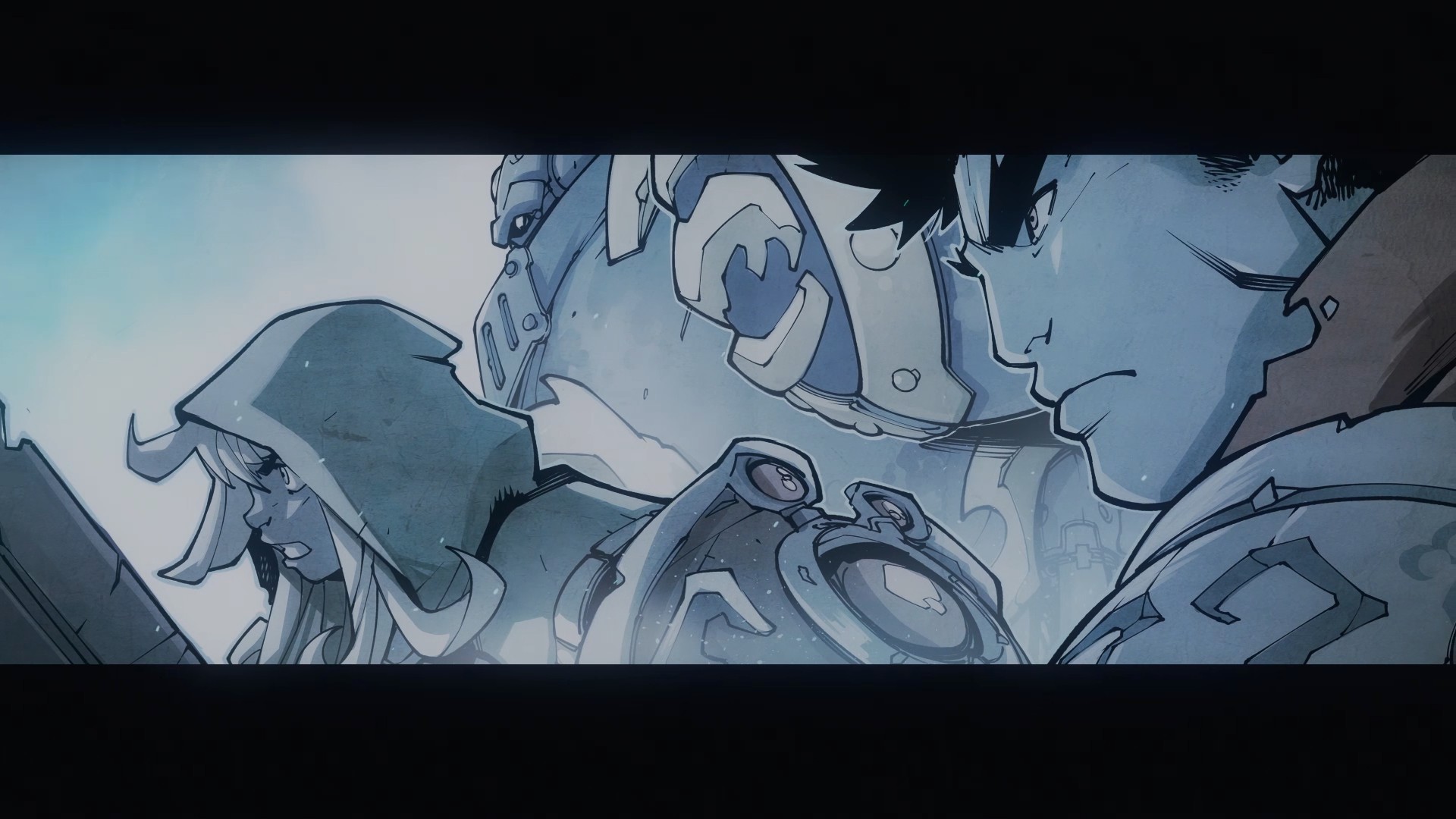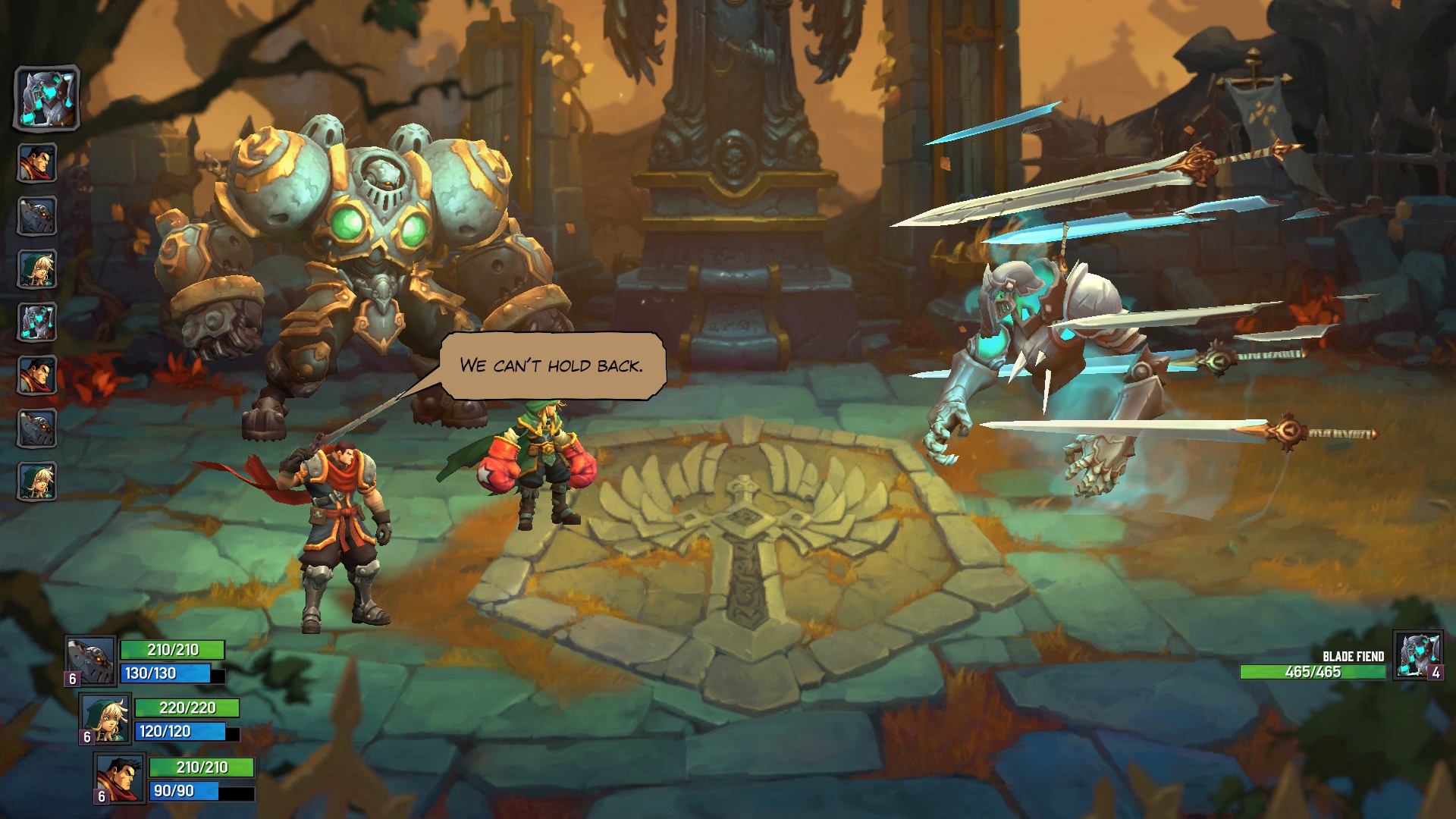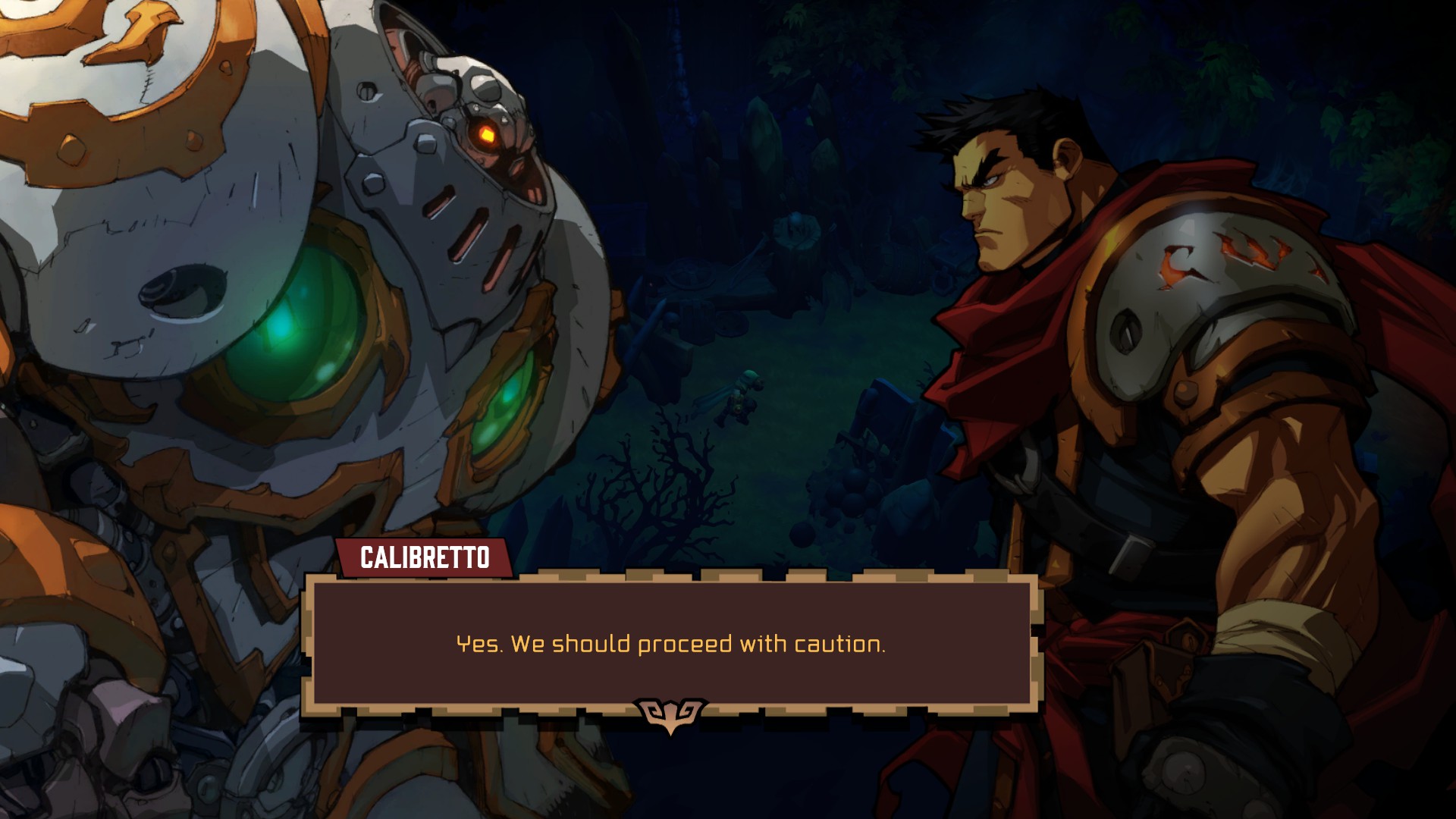Turn-based RPGs are my bread and almond butter. As such, during its tenure on Kickstarter Battle Chasers Nightwar was a deafening bleep on my radar (as well as on Cliqist‘s). However, before playing it I wanted to be prepared with all the story information I needed, and so I read all ten issues of the prematurely-ended comic series, Battle Chasers. Comics are not even a peripheral interest for me. I didn’t linger long from page to page to soak in the artistry, completing the last issue after only about two hours in total. Even then, I have to admit, there is something attractive about the colorful spreads and the brash archetypes traversing the panels, and can understand why Airship Syndicate decided to rescue the series off of that hanging cliff.
Making the Comics Come Alive
Battle Chasers Nightwar made the the journey from the page to the screen gracefully. The palette contracted into something darker and muted to match the new forbidding island, yet maintains the colorful atmosphere from the comics, something like Child of Light but in an arcanepunk setting. The 2D artwork, such as the protagonists and shopkeepers’ silhouettes, and the 3D models and areas fit organically. The unrestrained blows from the protagonist, Gully, and the incremental and angled movements of the automaton, Calibretto, make not only for satisfying attacks in combat but also realizes the visceral physicality the comics implied. The voice work is impressive overall, the actors mimicing the voices I imagined for the characters. All in all, the presentation is spot on. As I played the game I never felt bored or disappointed with scenery, and it set the transition between shopping, navigating the map, and exploring the procedural-generated dungeons well.
Satisfying Combat
I do recognize that RPGs feel dated and grindy to some. Indeed, it is a genre that has long gaps between innovations at times. Fortunately, on a mechanical level Battle Chasers Nightwar hits all the right notes. If you are not a fan of random battles (i.e. you aren’t me), worry not. Enemies actually appear on the world map and in dungeons. The combat itself is snappy and doesn’t drain your time with wearisome charge-ups or damage-over-time animations. Admittedly, battles are still rather slow, but they do require thought and planning that would slow down the pace anyway.
The synergy between party members is such that one can set up attacks several turns in advance, and preforming multi or overkills grants greater rewards. Some attacks, for example, do more if the enemy is debuffed, and one ability in particular heals the team every time they take a hit. This seems pointless, especially since it heals so little, but if hit with a multi-part attack, that HP adds up. Its good fundamental design decisions combined with new ideas that make me savor many of the battles and keeps me thinking several moves ahead.
Getting Stronger and Stronger
Most striking for me was the non-linear development options at my disposal. At certain level ups, each of the 6 playable characters have pre-defined abilities they acquire. How the player allocates each character’s skill points and which equipment to give inform strategy and offers a variety of play styles even among the same three party members. Throughout my time I enjoyed switching equipment and skill points around to strategize against different foes. How to spend gold and craft raw materials, what potions to bottle, and what food to bring are questions before each outing and each station within a dungeon. The story may prescribe different paths, but between hunts and the minutiae of character editing I never felt that my hand was being held.
But I did feel overwhelmed at times. That feeling alleviated, however in part because I realized that there were a broad set of decisions I could safely ignore. The difficulty pendulum shifted as I played, from me being pummeled to skating by with expending too much mana. Overcharge, a tertiary value that builds by attacking enemies and can be expended in place of mana, can be broken if properly leveraged. Dungeons have three difficulties, yet the first is too easy, and I did not quite find the middle difficulty too challenging. I cannot deny that the dungeons are fun. They are filled to the brim with loot, readable documents, little quests and offer places for crafting and buffing equipment that are not found elsewhere. They are both fun to explore and provide opportunities to reconsider the party’s trajectory. But, when the game isn’t too hard, the sixty minute plus minute crawls drag painfully. The turn-based battle system and hit stop do are not quite as exhilarating when the enemy doesn’t have much of a chance.
It all feels a little unbinded. The aesthetic and characters are great to to watch and listen to, and have little in the way of progressing a feeling of accomplishment. The story is largely disconnected from the comics, taking place a good deal after where the latest issue left off, and deals with an Evil McEvil Necromancer not present in the comic’s arc. The characters have good bed-side conversations at the inn, but what they say does little build an arc that makes me want to complete the next dungeon out of anything besides obligation.
Pros:
- Fantastic presentation
- Offers many ways to develop characters
- Enjoyable characters
Cons:
- Weak narrative
- Inconsistent balance
- Dungeons can drag on
Conclusion:
I want to adore this game, very much so. It is fun to look at and represents new ideas that may improve my favorite genre. However, this is a good RPG that feels a bit empty, and did little to encourage me onwards. At the end of the day, I adore what it does right and appreciate its weaknesses too. Great podcast game, but will not be my next obsession.







